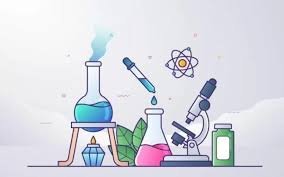Chemistry and Water Treatment: Enhancing the Quality of Our Most Vital Resource
Welcome to our website, where we explore the critical role of chemistry in water treatment. Clean and safe water is essential for human health, environmental sustainability, and economic development. Join us as we delve into the world of chemistry and water treatment, uncovering the principles, processes, and innovations that help us enhance the quality of our most vital resource.

- Water Quality: Understanding water quality is crucial in water treatment. Chemistry provides insights into the composition and characteristics of water, including its pH, hardness, dissolved solids, and presence of contaminants such as heavy metals, pesticides, and pathogens. By analyzing water samples, chemists can assess its suitability for various purposes and identify the required treatment processes.
- Coagulation and Flocculation: Coagulation and flocculation are key chemical processes in water treatment. Chemical coagulants, such as aluminum sulfate or ferric chloride, are added to water to destabilize suspended particles and colloids. This allows them to clump together and form larger particles called flocs, which can be easily removed through sedimentation or filtration.
- Disinfection: Disinfection is essential to eliminate harmful microorganisms from water. Chlorination, ozonation, and UV irradiation are common disinfection methods that rely on chemical reactions to inactivate or destroy pathogens. Chemists ensure the proper dosage and contact time to achieve effective disinfection while minimizing the formation of disinfection byproducts.
- Adsorption and Ion Exchange: Adsorption and ion exchange are effective methods for removing contaminants from water. Activated carbon and other adsorbents can selectively adsorb organic compounds, chlorine, and certain heavy metals. Ion exchange resins can remove ions like calcium, magnesium, and heavy metals by exchanging them with less harmful ions.
- Membrane Processes: Chemistry plays a vital role in membrane processes, such as reverse osmosis and nanofiltration. These processes use semi-permeable membranes to separate dissolved solids, salts, and contaminants from water. Understanding the chemistry of membrane materials and their interactions with water helps optimize membrane performance and durability.
- Advanced Oxidation Processes: Advanced oxidation processes (AOPs) involve the use of powerful oxidizing agents to degrade and remove persistent organic pollutants in water. Chemical reactions, such as hydroxyl radical (•OH) generation, help break down complex organic compounds into simpler and less harmful substances. AOPs are effective in treating industrial wastewater and removing emerging contaminants.
- Water Reuse and Resource Recovery: Chemistry enables the development of innovative techniques for water reuse and resource recovery. Advanced treatment processes, such as membrane bioreactors and chemical precipitation, can produce high-quality recycled water for various non-potable uses. Additionally, valuable resources, such as nutrients and energy, can be recovered from wastewater through chemical processes like struvite precipitation and anaerobic digestion.
At our website, we explore the vital intersection of chemistry and water treatment, unraveling the principles, processes, and innovations that help us enhance the quality of this precious resource. Join us as we delve into water quality assessment, coagulation and flocculation, disinfection, adsorption and ion exchange, membrane processes, advanced oxidation processes, and water reuse and resource recovery. Welcome to a place where chemistry plays a transformative role in safeguarding and optimizing our water supply for a sustainable future.

